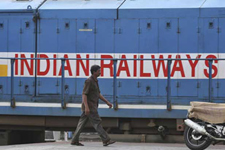By TIOL News Service
NEW DELHI, MAY 06, 2010: IN Vandana Global Ltd vs. CCE, Raipur 2008-TIOL-2327-CESTAT-DEL, while hearing a stay application filed by the assessee, the Division Bench of CESTAT referred the following issues to the President of CESTAT for resolution by a Larger Bench.
(a) Whether the term �capital goods� can include plant, structures embedded to earth?
(b) Whether the goods like angles, joists, beam, channels, bars, flats which go into fabrication of such structures can be treated as �inputs' in relation to their final products as inputs for capital goods, or none of the above?
(c) Whether the credit can be allowed in respect of goods like angles, joists, beam, channels, bars, flats which go into fabrication of such structures and plant?
While referring the above issues to a Larger Bench, the Principal Bench of CESTAT at New Delhi observed as follows:
"In the present case, we, prima facia, find that the steel items like angles, joists, beams, channels, bars, flats, etc. are used in the construction work; the resultant structures are permanently embedded to the earth; they cannot be considered as part of the machinery/equipment; they do not qualify to be called as goods; as they cannot be treated as goods; they can not be considered as capital goods. We find that credit has been taken on the same goods on some occasions as capital goods and on other occasions as inputs. These items, prima facie, can not be considered as inputs in relation to the final products namely, sponge iron ingots, billets manufactured by them. Therefore, prima facie, we are of the view that the credit' availed by the appellant may not be admissible."
In the process it differed with the views expressed by another Coordinate Bench in Bhushan Steel and Strips Ltd. vs. Commissioner 2007-TIOL-2306-CESTAT-MUM wherein the Tribunal observed as follows:
"In the present case, we, prima facia, find that the steel items like angles, joists, beams, channels, bars, flats, etc. are used in the construction work; the resultant structures are permanently embedded to the earth; they cannot be considered as part of the machinery/equipment; they do not qualify to be called as goods; as they cannot be treated as goods; they can not be considered as capital goods. We find that credit has been taken on the same goods on some occasions as capital goods and on other occasions as inputs. These items, prima facie, can not be considered as inputs in relation to the final products namely, sponge iron ingots, billets manufactured by them. Therefore, prima facie, we are of the view that the credit' availed by the appellant may not be admissible."
In the meantime, the Kolkata Bench referred the issues with regard to eligibility of credit on cement and tor rods used in installation/initial setting up of production machinery to a Larger Bench.
After marathon hearings from February 16-18, 2010, the Larger Bench considered comprehensive submissions made by eminent counsels representing various assessees on one side and the sole Departmental Representative Mr. B.K. Singh, Jt. CDR on the other, and made some significant and far reaching observations as detailed below:
++ Explanatory Memorandum [to Finance (No.2) Bill, 2009] placed before the Parliament makes it amply clear that the purpose of the amendment [to Rule 2(l) of CCR, 2004] was clarificatory and it sought to clarify that the expression �input' does not cover cement and steel items used for construction of shed, building or structure for support of capital goods.
++ When it is clear from the Explanatory Memorandum and the attendant Circulars/Clarifications issued by TRU that the Government never intended to allow CENVAT credit on the impugned items, it cannot be argued that the Government had used its general powers under Section 37(1) of CEA, 1944, in excess of the specific powers under Section 37(2)(xvia) to grant such credit for the earlier period prior to the amendment.
++ In Indian taxation system, all goods and services supplied by a business are not subjected to tax since there are goods and services which are either (i) not taxable having not been brought under the tax net or (ii) are eligible for full exemption. In such a scenario, Parliament has not authorized credit of input tax paid on all goods and services purchased by an assessee as all his outputs may not be taxable. Under the scheme of excise law, the power to grant credit of excise duty paid on goods by a manufacturer is limited and is governed by the rule making power under Section 37(2)(xvia).
++ The definition of 'capital goods' primarily includes machinery items; components, spares and accessories of the same; and a few other things which have been specifically added such as pollution control equipment; moulds, dies; refractories; tubes, pipes and fittings thereof; and storage tank. Moulds, dies, refractories, tubes and tank have been specifically added as they would not get classified and included as machinery items. But the rule makers in their wisdom have specifically and additionally included these items considering their functional utility to the manufacturing process.
++ However, factory shed, building, foundation and structures (in the manufacture of which the impugned goods viz., cement and steel items are used) have not been specifically listed under the definition of 'capital goods'.
++ Since the foundation and supporting structures can neither be considered as capital goods nor as parts and accessories of capital goods, nor the same have been specifically listed in the definition of capital goods (while items such as tubes and pipes and storage tank etc have been specifically listed), the question of treating cement and steel items as inputs for capital goods cannot arise.
++ The argument that the impugned goods viz., cement and steel items should be alternatively considered as inputs for the final product treating the same as having been used in relation to the manufacture of final products is not acceptable in view of the decision of the Supreme Court in the case of Maruti Suzuki Ltd 2009-TIOL-94-SC-CX which held that inputs should have a nexus with the final products, in or in relation to the process of manufacture.
++ The immovable capital assets in the form of foundations and structural supports embedded to earth cannot be considered as intermediate goods arising in the process of manufacture or the final product either, to allow credit of duty paid on goods used for fabrication of such foundation and structural supports.
++ The argument that the value of cement and steel items used for laying the foundation and building structural support contributes to the value of the final product and therefore, credit of the duty paid on the same should be allowed does not appear to be legally tenable under the CENVAT credit scheme since the credit under this scheme is not allowed with reference to value addition for final products.
++ As held by the Apex Court in the Maruti Suzuki Ltd case , the integral connection with the ultimate product, the dependence test and the functional utility test are essential in deciding an eligible input.
With these important observations, the questions referred to the Larger Bench were answered as follows:-
(a) The term "capital goods" has been defined in the CENVAT Credit Rules, which in turn have been framed under the rule making powers conferred under Section 37(2) of the Act. The said Section refers to credit of duty paid on goods used in, or in relation to the manufacture of excisable goods. Hence, 'capital goods' defined in the CENVAT Credit Rules in the context of providing credit of duty paid, have to be excisable goods. Whether a particular plant or structure embedded to earth can be considered as excisable goods or not has to be determined in the light of the decisions of the Hon'ble Supreme Court on the issue, which is no longer res integra.
(b) Goods like cement and steel items used for laying 'foundation' and for building 'supporting structures' cannot be treated either as inputs for capital goods or as inputs in relation to the final products and therefore, no credit of duty paid on the same can be allowed under the CENVAT Credit Rules for the impugned period.
As regards the issue pertaining to one appeal viz., the argument that impugned steel items have been used not for building supporting structures but for fabricating parts of machinery has to be examined by the Jurisdictional Bench in the light of the facts of that particular case.
With this decision, twenty two appeals were disposed of by the Larger Bench. Revenue scores a bitter sweet victory and all praise to the Joint Chief Departmental Representative who stole the thunder from eminent stalwarts representing the assessees. But is it the end of road for assessees?
Not necessarily, because the nexus test laid down by the Apex Court in Maruti Suzuki Ltd case appears to have been twisted by the Larger Bench to reject CENVAT credit on the impugned goods because the Supreme Court in that case was dealing with the limited issue of eligibility of input credit on inputs used in generation of electricity in a captive power plant and cleared to joint ventures, power grid etc for a price, apart from captively consuming the same for their manufacturing activity.
After all without a civil structure or foundation and/or a structural support, plant and machinery can never be installed in a factory and without proper installation of plant and machinery how can they function (remember the functional test) and produce/manufacture final products. Probably, a field visit by members of the Larger Bench perhaps to a large cement plant (which has huge conveyor belts to transfer coal, iron pellets, and clinker etc to rotary kilns) would have resulted in a better understanding of the various tests laid down by the Apex Court .
So in all probability this issue is bound to reach the highest temple of justice viz., the Apex Court . Watch this space.
(See 2010-TIOL-624-CESTAT-DEL-LB in 'Excise')
















